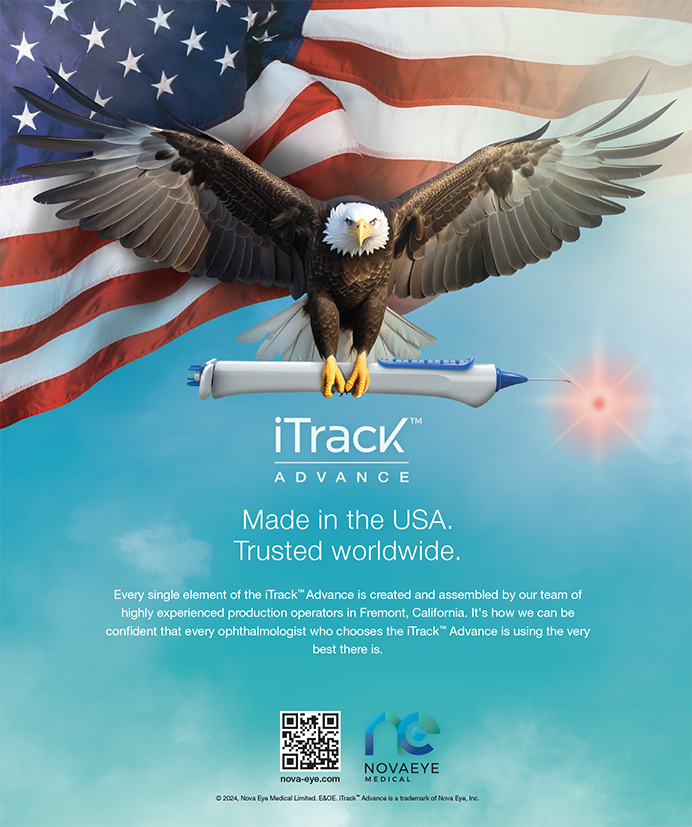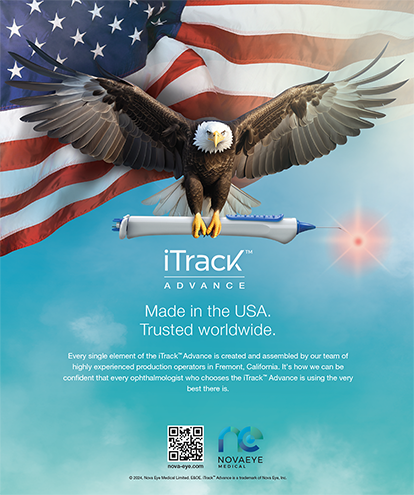The AcrySof Toric IOL (Alcon Laboratories, Inc., Fort Worth, TX) has been shown to provide a high level of spectacle independence for distance vision in patients who have preoperative corneal astigmatism.1 The available amounts of cylindrical correction with the AcrySof Toric IOL, the lens’ stable centration, and its rotational stability represent significant improvements over earlier lens designs, and they allow this IOL to provide predictable, lasting, and accurate neutralization of corneal astigmatism. 2 In clinical trials, the majority of AcrySof Toric IOLs rotated less than 5° after 6 months.1 The lens’ stability in the capsular bag has been attributed to the design of its haptics and the adhesive quality of the IOL material.2 These qualities, however, may also make it somewhat more challenging to rotate this IOL to the desired axis. This is particularly evident after the surgeon removes the ophthalmic viscosurgical device (OVD) from the capsular bag, which is recommended before final alignment of the toric IOL.1 Some ophthalmologists may therefore be reluctant to offer the AcrySof Toric IOL to their patients for fear of difficulty with this surgical step.
This article describes a safe and simple one-handed technique for rotating the AcrySof Toric IOL to the final desired axis after removal of the OVD.
SURGICAL TECHNIQUE
Prior to surgery, we use a marking pen to place reference marks at the corneal limbus in the horizontal and vertical meridians while the patient is sitting upright. After the patient is sterilely prepared and draped, we mark on the cornea the intended axes for the toric IOL and the corneal incision using the Mastel Toric System (a Gimbel/Mendez fixation ring with a Bores Meridian marker; Mastel Precision, Inc., Rapid City, SD) to be more certain of marking the axis through the center of the cornea. The incision is made at the axis specified by the AcrySof Toric IOL Calculator (www.AcrySofToricCalculator.com), and the cataract is emulsified by routine methods.
After cortical removal, we inflate the capsular bag with an OVD and place the AcrySof Toric IOL in the bag using the Monarch II cartridge injection device (Alcon Laboratories, Inc). The IOL is rotated clockwise until the toric IOL’s markings are just short of their final intended axis (that is, within about 10° counterclockwise). We remove the OVD from the eye using a silicone-tipped I/A instrument (Alcon Laboratories, Inc., or Millennium Surgical Corporation [Narberth, PA]), while stabilizing the IOL with a second instrument to prevent further rotation.
We achieve final orientation of the IOL by turning the I/A port posteriorly and resting it directly on the midperiphery of the anterior surface of the IOL’s optic, near the toric IOL’s markings. We apply vacuum until the IOL is firmly suctioned to the aspiration port, and then we rotate the IOL so that it aligns with the corneal axial markings made at the beginning of surgery. It is typically necessary to alternate between opposite lateral sides on the anterior surface of the toric IOL in order to effect its proper centration and orientation (Figure 1).
After alignment, we hydrate the phaco incision and confirm its stability per our routine practices.
DISCUSSION
Because patients today have high refractive expectations for cataract surgery, it is important to offer individuals with preoperative corneal astigmatism the possibility of decreased dependence on spectacles, as afforded by toric IOLs. The precise axial placement of these lenses is critical to patients’ satisfaction. Each degree of misalignment reduces the effective correction by approximately 3%, rendering zero astigmatic correction when the lens is 30° off the intended axis.3,4 Careful preoperative evaluation and planning are necessary to accurately determine the eye’s corneal astigmatism for toric power calculations, in addition to the standard biometric measurements for spherical IOL power calculations. Additionally, the surgeon needs to be able to reliably position the AcrySof Toric IOL at the correct axis after removing the OVD from the capsular bag.
The technique we have described should enhance surgeons’ ability to safely and easily rotate the toric IOL into the correct axial orientation. Because irrigation is always flowing when the phaco handpiece is in aspiration position, the anterior chamber remains formed during this maneuver. Additionally, because all of the manipulations are carried out anterior to the IOL’s optic, there should be little likelihood of damage to the posterior capsule. Finally, damage to the IOL is unlikely if the surgeon uses the silicone-tipped I/A instrument (vs a metal instrument).
Although we have found this technique superior to others we have tried, it does not guarantee success in all cases. In eyes that have loose zonules, floppy capsular bags, or positive pressure with a collapsed capsular bag, rotating the AcrySof Toric IOL in the described manner can be challenging. For these cases, it may be preferable to use a two-handed technique or specialized instruments designed for simultaneous irrigation and rotation of the IOL (eg, Donnenfeld Irrigating Positioner; Accutome, Inc., Malvern, PA).
Drs. Cionni and Waicomb would like to thank Dr. Sands for developing this technique. A video demonstration is available at http://eyetube.net/v.asp?zilewi.
Robert J. Cionni, MD, is the medical director of The Eye Institute of Utah in Salt Lake City. He is a consultant to Alcon Laboratories, Inc. Dr. Cionni may be reached at rcionni@theeyeinstitute.com.
Joshua J. Sands, MD, is with the Cincinnati Eye Institute and is a clinical professor at the University of Cincinnati. He acknowledged no financial interest in the products or companies mentioned herein.
Bandana Waicomb, MD, is a clinical professor at the University of Cincinnati. She acknowledged no financial interest in the products or companies mentioned herein.
- AcrySof Toric Product Information.Fort Worth,TX:Alcon Laboratories,Inc.;2005
- Chang DF.Comparative rotational stability of single-piece open-loop acrylic and plate-haptic silicone toric intraocular lenses.J Cataract Refract Surg.2008;34:1842-1847.
- Ma JJ,Tseng SS.Simple method for accurate alignment in toric phakic and aphakic intraocular lens implantation.J Cataract Refract Surg.2008;34:1631-1636.
- Shimizu K,Misawa A,Suzuki Y.Toric intraocular lenses:correcting astigmatism while controlling axis shift.J Cataract Refract Surg.1994;20:523-526


